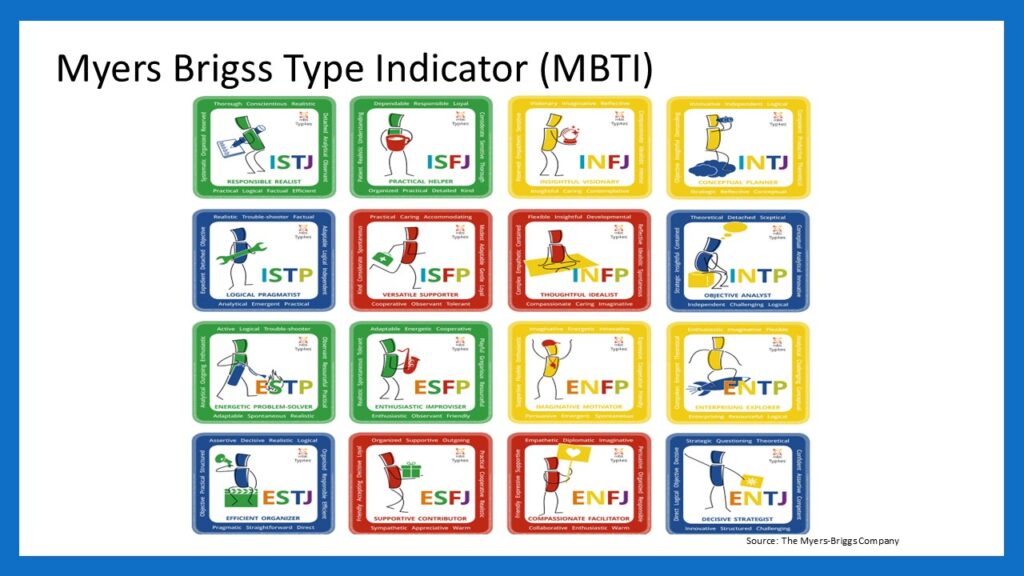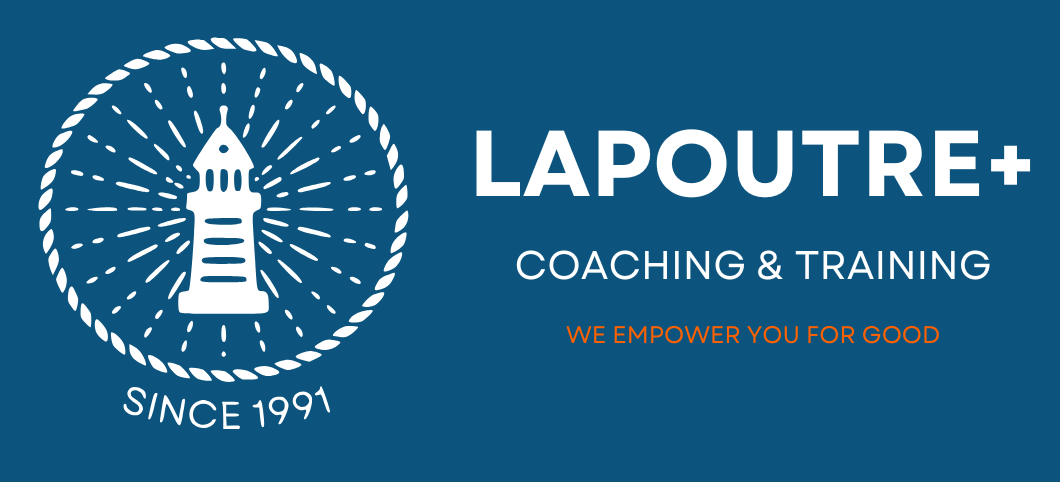The Myers Briggs Type Indicator (MBTI)
Every person is different and has his or her own personal preferences. The Myers Briggs Type Indicator (MBTI) can help determine someone’s motives and motivations for showing certain behavior, his or her ideal working environment, and how he or she interacts with colleagues.
The MBTI test is a questionnaire about someone’s preferences and his or her style of working. How well does someone actually know themselves? The MBTI test is an instrument to gain insight into this. The test was developed by Katharine Briggs and Isabel Myers and is based on Carl Jung’s theory about psychological types.
The 4 dimensions
The MBTI test is one of the most popular personality tests, with which someone gets to know themselves better. It describes a person’s preferences in 4 dimensions:
- The focus on the environment: extrovert (E) or introvert (I).
With extroversion, one gets energy from the outside world and prefers to communicate verbally. This person prefers to talk in order to develop ideas further. This person has a broad interest, is social and expressive, and easily takes initiative in work and relationships. Introversion draws energy from the inner world of thoughts, feelings and ideas. This person is focused on his or her own world of experience. This person prefers to communicate in writing and prefers to think about how to develop ideas further. He or she is isolated and reserved and takes initiative when something is important to him or her. - The way of perceiving: observational (S) or intuitive (N).
An observational person receives information by using all five senses. This person is focused on facts and talks in the here and now. This person draws careful and accurate conclusions, understands ideas, sees and remembers details and wants to apply theories in practice. An intuitive person has a great imagination and is verbally creative. This person quickly draws conclusions based on a hunch, trusts inspiration and sees and remembers few details. - The way of deciding: thinking (T) or feeling (F).
When thinking, decisions are based on logic and an objective cause-and-effect analysis. This person is analytical, reasonable, and solves problems with logic. Sometimes, this person is unforgiving. The person who relies more on feeling is sympathetic and assesses the influence of decisions on how people react. This person strives for harmony and a positive interaction with others, which makes him or her appear gentle. - The way of working: structured (J) or spontaneous & flexible (P).
Structured people like planning and have an organized attitude to life. They work systematically, prefer to record things and try to avoid stress due to time pressure. The spontaneous type has a flexible and spontaneous approach and wants to keep all options open. This person is spontaneous, open to change, and gets energy from time pressure.
Personal MBTI code
Each person has a preference for each dimension and is given the corresponding letter in their ‘personal MBTI code’. By combining the four characteristics, a total of 16 personality types are possible. For example, someone with the code INTJ is an introvert (I) intuitive (N) thinker (T) and is a judge (J). The MBTI test gives an indication of someone’s behavioral preference, not of knowledge, skills or the behavior itself.
The application possibilities of the MBTI test are very diverse, including individual development, team building, organizational change, improving communication, training and career advice and even relationship advice.

